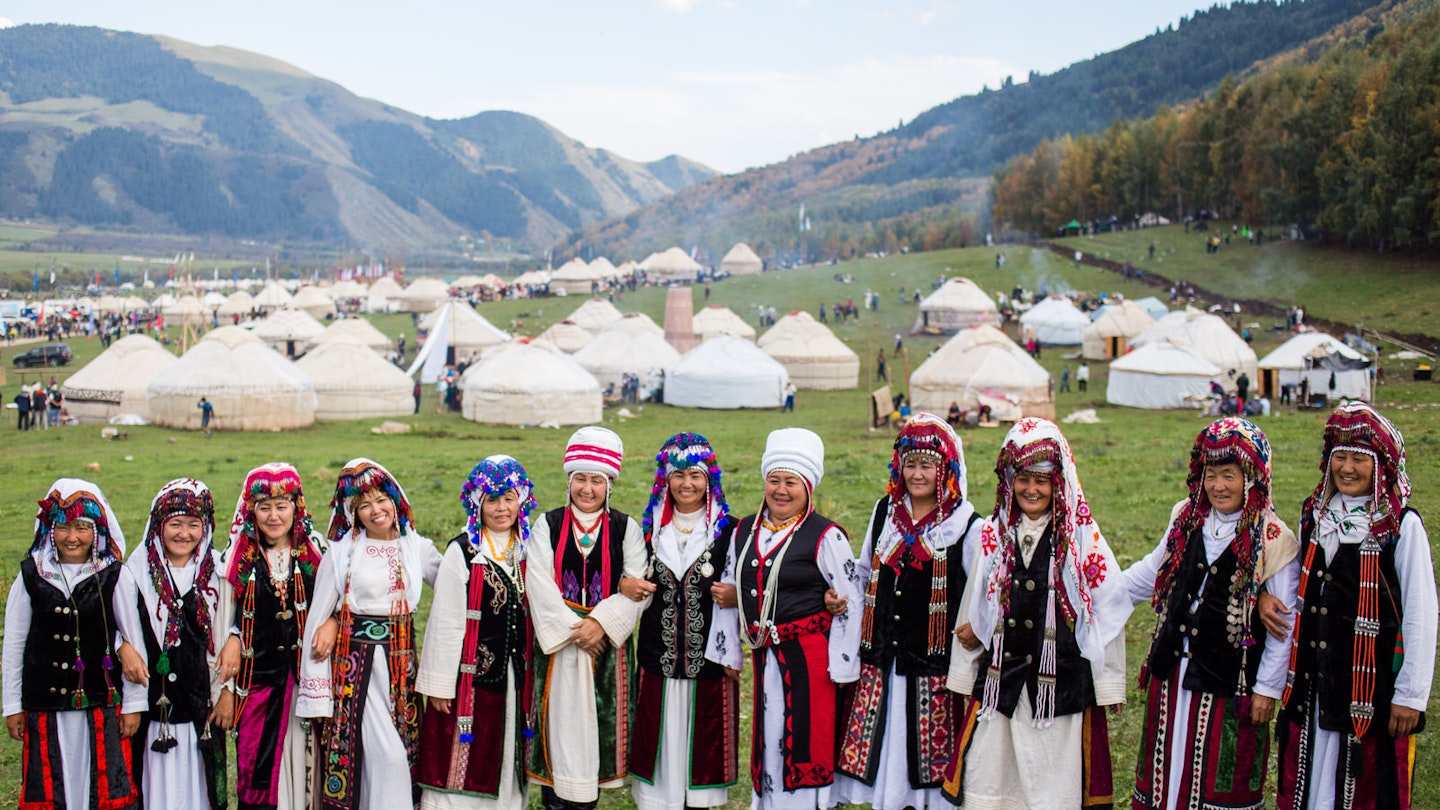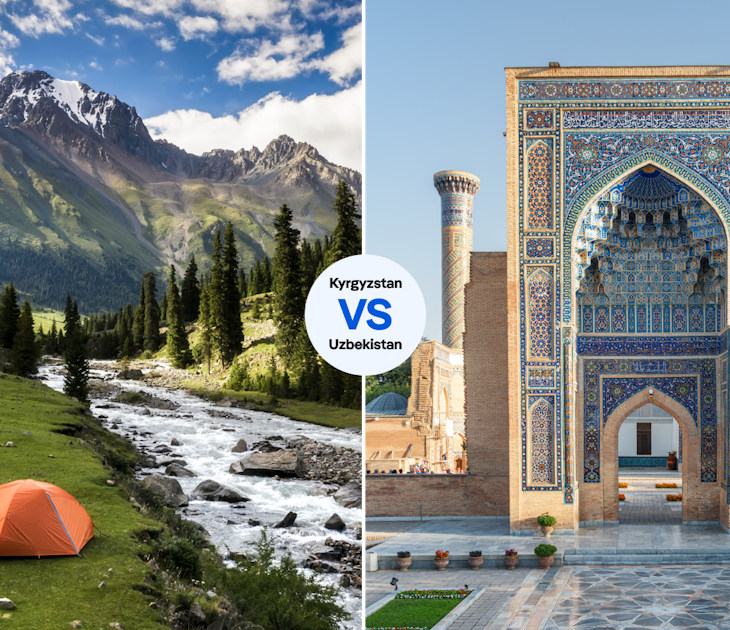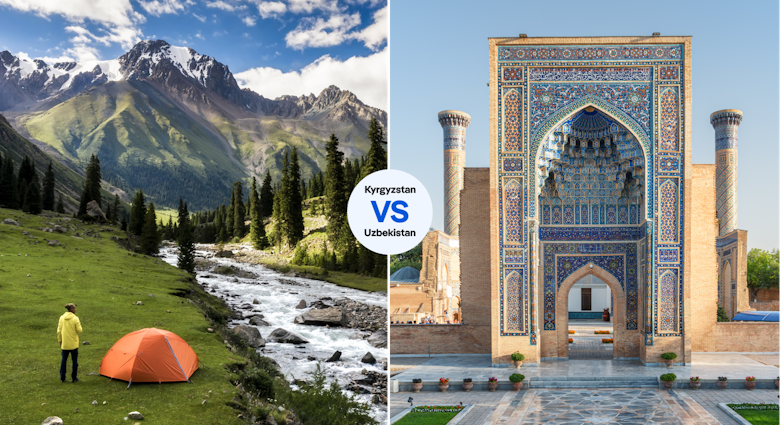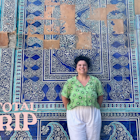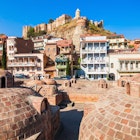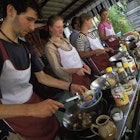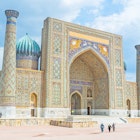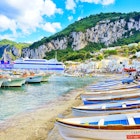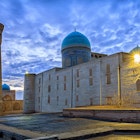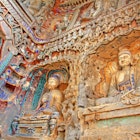'If Genghis Khan were alive, he would be here.' These words kicked off the 2016 World Nomad Games: Kyrgyzstan's celebration of traditional nomadic sports and culture, and Central Asia's biggest sporting event.
The World Nomad Games is sometimes heralded as the 'Olympics for nomads', but with more boiled meat. There are horse games, wrestling, hundreds of yurt tents and thousands of pointy white kalpaks, the national hat of Kyrgyzstan (they represent the virgin snowy peaks of the Tien Shan mountains, of course). Throughout, participants and visitors from around the world mingle in a festival atmosphere to enjoy the most exciting celebration of nomadic culture since the Great Kurultai of 1206.

For one week every two years (2-8 Sep in 2018), the lakeside town of Cholpon-Ata transforms from Kyrgyzstan's busiest beach resort into a bustling international gathering of sportsmen and spectators. Events centre on traditional Central Asian sports and activities, such as kok-boru (goat-carcass polo), yurt-building and table games.
Unfortunately, official information about the World Nomad Games is hard to come by, and first-time visitors often ask the same basic questions as they begin planning their trips. So we've pulled together this guide for how to make the most out of a trip to Central Asia's biggest sporting event.
Buying tickets to the World Nomad Games
Entry is free and open for all of the sporting competitions and cultural events at the World Nomad Games (though, at times, the wrestling events fill to capacity and no more spectators are allowed inside).

The only events that require tickets are the opening and closing ceremonies (2 and 8 Sep 2018, respectively), held at the Cholpon-Ata Hippodrome two kilometres east of town. Tickets can be purchased for 600-6000som through the official World Nomad Games mobile app. In 2016, tickets were also available in-person at post offices in Bishkek, but no details have been released yet as to whether this will be the case for 2018.
World Nomad Games competition schedule and venues
Typically a few weeks before the World Nomad Games kicks off, a schedule of the sports competitions are released for each venue. These schedules are subject to change, often without advance notice, but learning to roll with it and enjoy whatever's on is part of the appeal of the event.

Traditional horse games like er enish, kok-boru, cirit are held at the Hippodrome. Most of these sports are taken quite seriously in Central Asian cultures, and competition can be intense – kok-boru finals in 2014 and 2016 saw Kyrgyzstan and Kazakhstan face off to packed (and loud!) stadiums, with Kyrgyzstan pulling away with the victory both times.
Wrestling events take place next door in the Gazprom Sports Complex, constructed for the 2016 World Nomad Games. Seating is limited, so if you're really keen to see a particular event, plan to arrive well in advance.

Limited numbers of other competitions may happen elsewhere; table games (toguuz-korgool, mangala) and ordo competitions generally take place at one of the beach resorts in the vicinity of town, but have also been held at the Rukh Ordo cultural centre in Cholpon-Ata.
Cultural events at Kyrchyn Jailoo
The cultural base for the World Nomad Games is Kyrchyn Jailoo (jailoo is the Kyrgyz word for a summer pasture where nomads graze their flocks), located 52km from Cholpon-Ata, in the mountains above Semenovka village. Generally open to the public from the second day of the Games, this is where to watch major theatric spectacles, demonstrations of regional Kyrgyz customs, performances of traditional sports like salburuun (horseback archery and hunting with golden eagles), and more yurts than you ever thought possible in one valley.

Other activities on offer can include hot-air balloon rides, horse taxis (literally what they sound like – giddy-up!), and food and drink across the small stream from the official yurt camp. It's a long trip from Cholpon-Ata to Kyrchyn, especially as traffic begins to back up on the narrow final stretches of the mountain road from Semenovka, so plan on spending most of a day if heading here.
Ethno-science at the World Nomad Games 2018
The World Nomad Games Secretariat have also announced that there will be an 'Ethno-Science' component to the 2018 events. Unofficial comments indicate that this will be aimed at studying the history and culture of nomadic peoples, with plans to form a permanently functioning scientific site for researchers, academics and scientists.
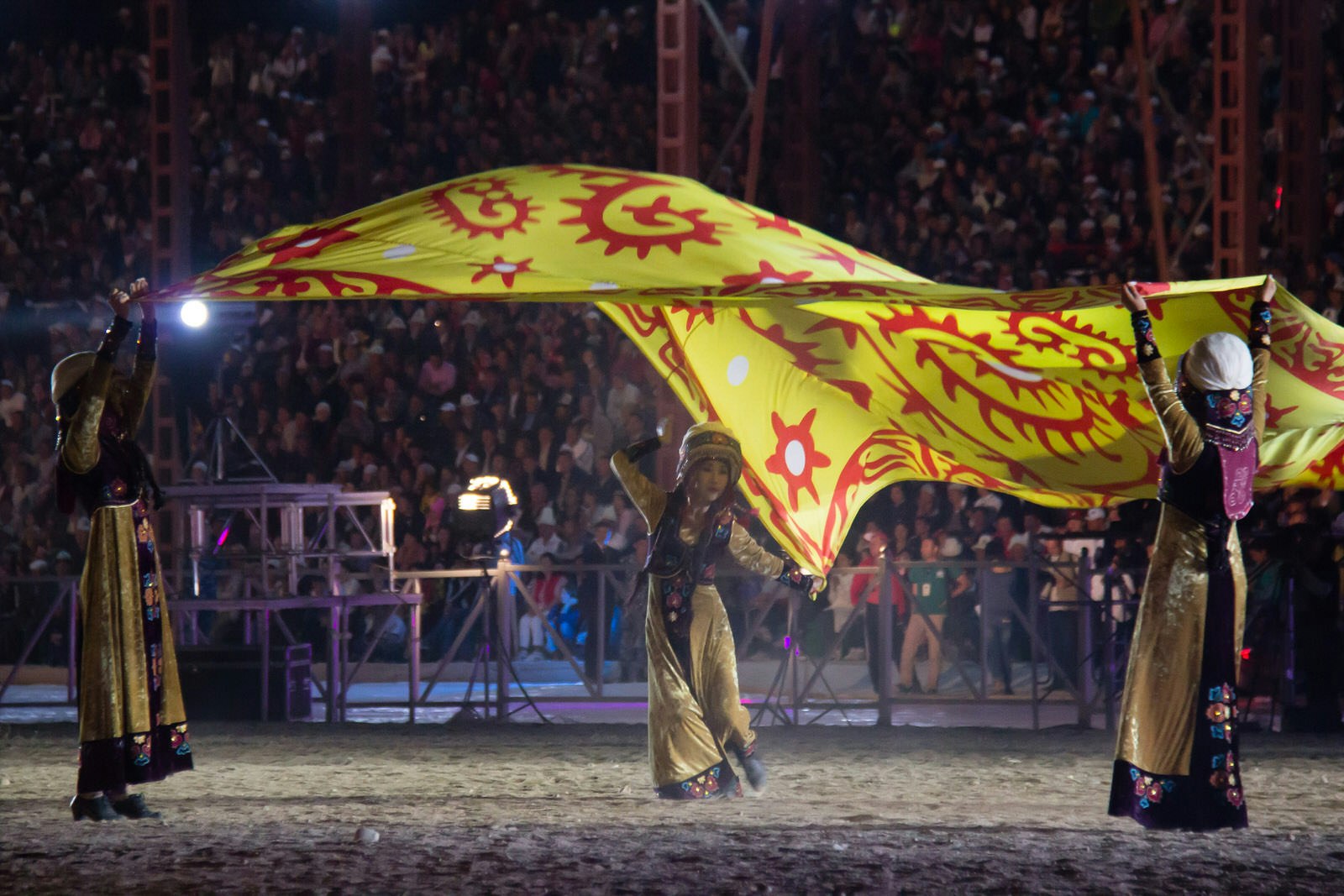
Getting to and around the World Nomad Games
The World Nomad Games events are held at several points along the north shore of Issyk-Köl lake in Kyrgyzstan's northeast. Most visitors will fly in to Bishkek's Manas International Airport (connecting mostly from Russia, Istanbul, Dubai and Ürümqi) and transit overland via hired car or public minibus to the main venue in the town of Cholpon-Ata. Bus services organised by the World Nomad Games generally run throughout the day between the town centre, the Hippodrome and venues hosting off-site table game events. Limited services also run to the Kyrchyn valley, though in practice you're often better off taking a local marshrutka minibus, as they depart more often.
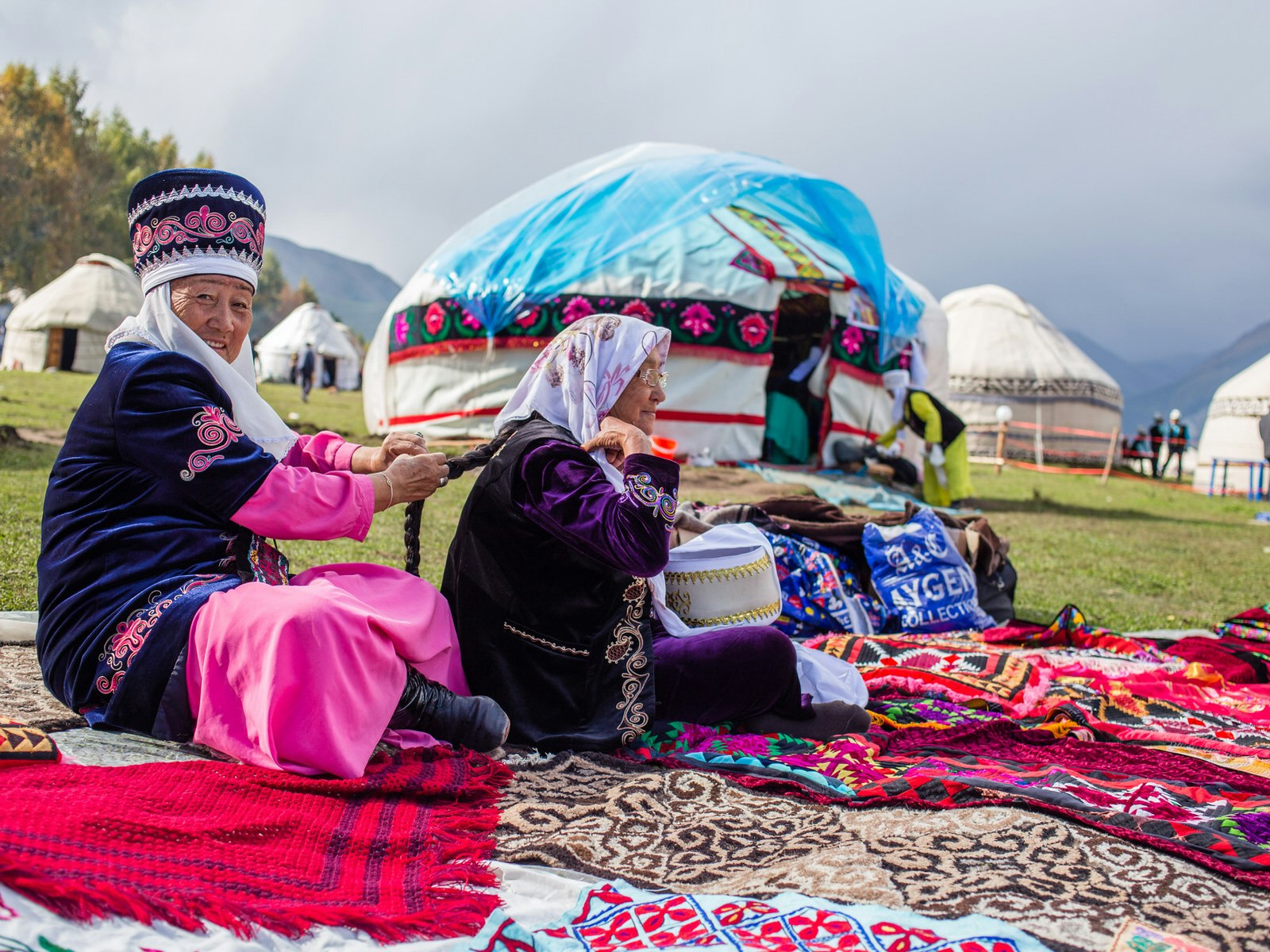
Accommodation at the World Nomad Games
The highest concentration of accommodation options is in Cholpon-Ata itself, which has everything from luxury resorts to backpacker hostels. Enterprising locals often rent out rooms or whole cottages throughout the summer and some have even set up yurts directly across from the Hippodrome, though these are almost impossible to book without already being in Cholpon-Ata. Beach resorts line most of the lakeshore between Cholpon-Ata and Bosteri nine kilometres to the east. While public transport is available, traffic during the World Nomad Games is often horrendous; stay out here at your own peril.
During the 2016 World Nomad Games, quite a number of Kyrgyz families put up yurts across a small stream from the Kyrchyn valley's official yurt camp and offered food and accommodation to visitors. Prices are completely negotiable, so you should bargain hard, but for travellers who want to spend the bulk of their time at Kyrchyn, it could be a more convenient option than busing to and from Cholpon-Ata each day.
